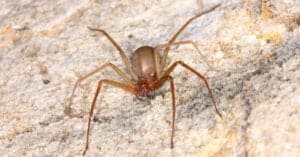Costa Rica is a lovely country in Central America. It also happens to be home to over 2,000 species of spiders. That’s good news if you love arachnids and not-so-great news if you have arachniphobia. As humans, we tend to be afraid of just about anything we don’t understand, and sadly, arachnids fall into that category for many people. Others find our eight-legged friends lovely and cute and are confident that some species make great low-maintenance pets.
One such species is the jumping spider. These sweet and curious little friends want nothing more than to stop by and say hi occasionally. They have even taken over cute videos on TikTok, Instagram, and Facebook. To say they have become the next “IT pet” would be an understatement. Costa Rica is home to many adorable jumping spiders. Still, it’s also home to many less huggable (not that you should ever hug your spider) spider-types, like Goliath Bird Eating Tarantulas.
1. Brazillian Wandering Spider (Phoneutria Boliviensis)

Costa Rica is not the home of the most dangerous species of Brazilian Wandering Spider, the
Phoneutrianigriventer
.
©Guillermo Ossa/Shutterstock.com
The Brazillian Wandering Spider belongs to the genus Phoneutria which means murderess in Greek, which isn’t altogether true unless you’re an insect or tiny tree frog. The genuine and potentially deadly “Brazillian Wandering Spider” is Phoneutria nigriventer which is not found in Costa Rica. The Phoneutria boliviensis is the species found in Costa Rica, and it is generally no more venomous than a traditional spider bite. You will experience some swelling and itching; in sporadic cases, tachycardia, sweating, vomiting, and shaking have occurred. The worst symptoms happen to small children, just like many spider bites. The difference is that this spider may attack if threatened, whereas many spiders will run to escape. This Wandering Spider is only about an inch big, which will undoubtedly make it hard to see if you’re walking through a jungle. Luckily, no deaths have ever been reported.
2. Goliath Birdeating Tarantula (Theraphosa blondi)
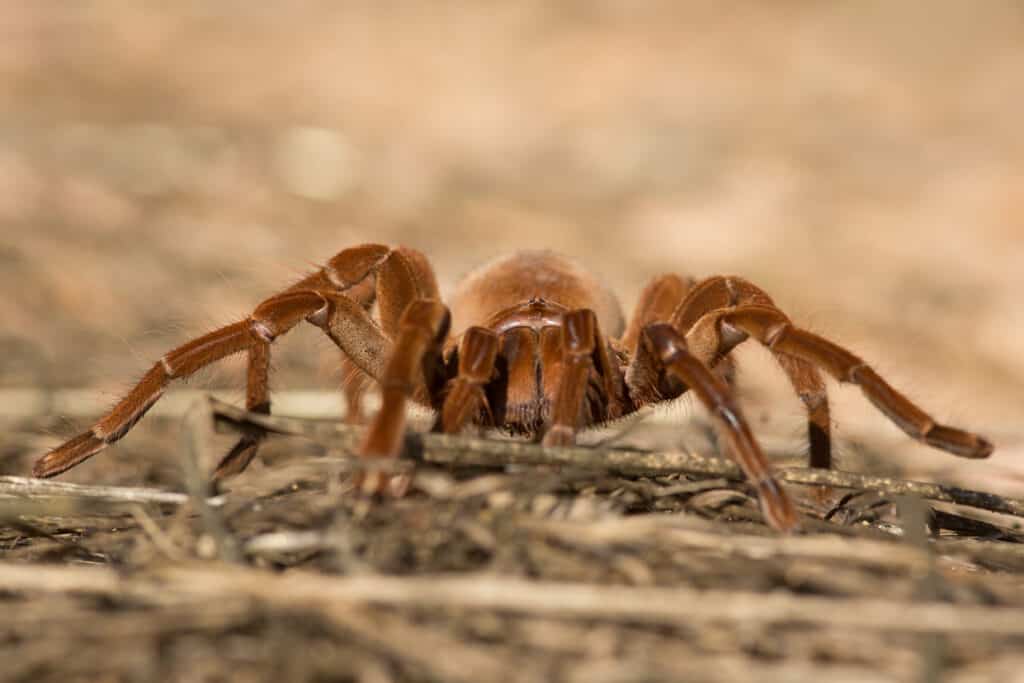
Goliath birdeater (Theraphosa blondi) belongs to the tarantula family Theraphosidae. Found in northern South America and Central America, it is the most enormous spider in the world by mass and size.
©Milan Zygmunt/Shutterstock.com
The Goliath Birdeating Tarantula is the world’s largest tarantula and is second to the Giant Huntsman Spider in leg length. Its body ength is approximately five inches with a legspan of 11 inches! It is also one of the most venomous spiders in the world and can bring on anxiety in not-so-spider-friendly people. Though it may seem scary looking, this is not a spider that is harmful to humans and would hurt on the same level as a wasp sting.
Sadly, these spiders are a delicacy in some countries and are roasted in banana leaves. This is a spider that’s found deep in the Costa Rican rainforest and is often referred to as the “King of Spiders.” Though, if we’re honest, the females are the larger sex and should therefore be reffered to as the “Queen of Spiders.”
2. Bluefront Tarantulas (Aphonopelma burica)

Costa Rican Bluefront Tarantulas are the same as the Nicaraguan Bluefront Tarantulas.
©RebeccaBloomPhoto/ via Getty Images
The Bluefront tarantula gets its name from its blue chelicerae or teeth. The rest of the spider is reddish-brown. It is harmless to humans and only paralyzes prey with its venom. Since they do not make webs to capture prey, they rely on their speed and stalking skills. Bluefront tarantulas spend most of their time in their burrows and only come out to capture prey. Males of the species only live for five years, whereas females can live up to 20 years.
3. Zebra Tarantula (Aphonopelma seemanni)
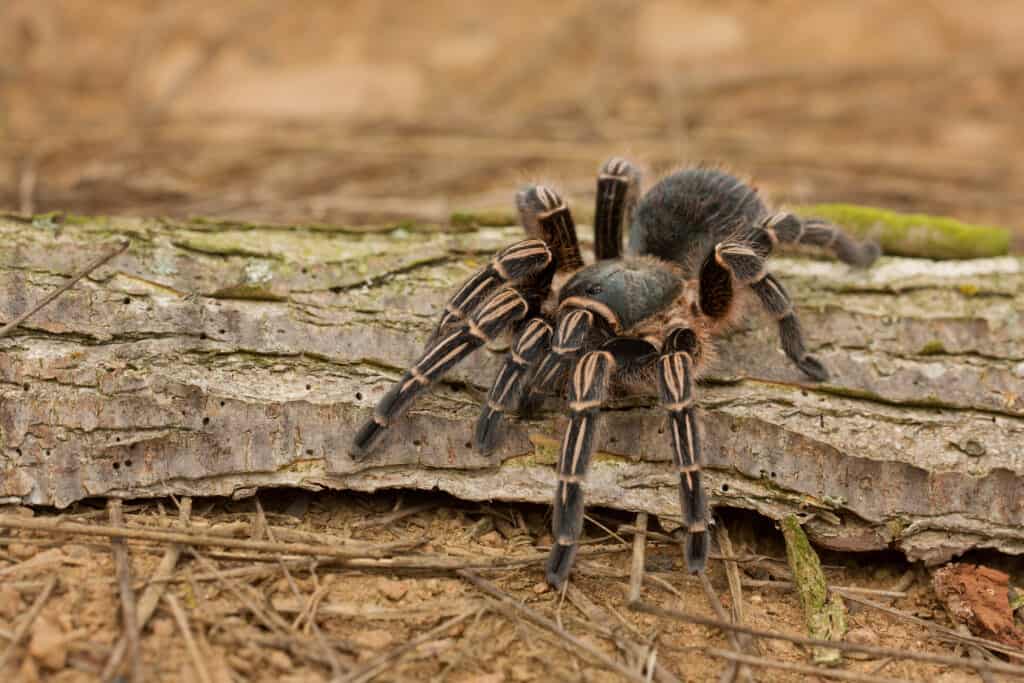
The Costa Rican Zebra Tarantula, also known as the striped-knee tarantula (Aphonopelma seemanni), is a species of tarantula inhabiting most of western Costa Rica and other parts of Central Am.
©Milan Zygmunt/Shutterstock.com
The Costa Rican Zebra Spider is a black-bodied spider reaching five inches long in adulthood. Occasionally they are brown. They have white stripes on their legs, earning them the name Zebra Spider.
These communal tarantulas live in groups and dig burrows to keep them from becoming cold at night.
This harmless spider eats beetles and other insects in the brushlands of Costa Rica. The females can live 20 years, whereas the males only live for five years.
4. Tiger Rump Tarantula (Davus fasciatus)
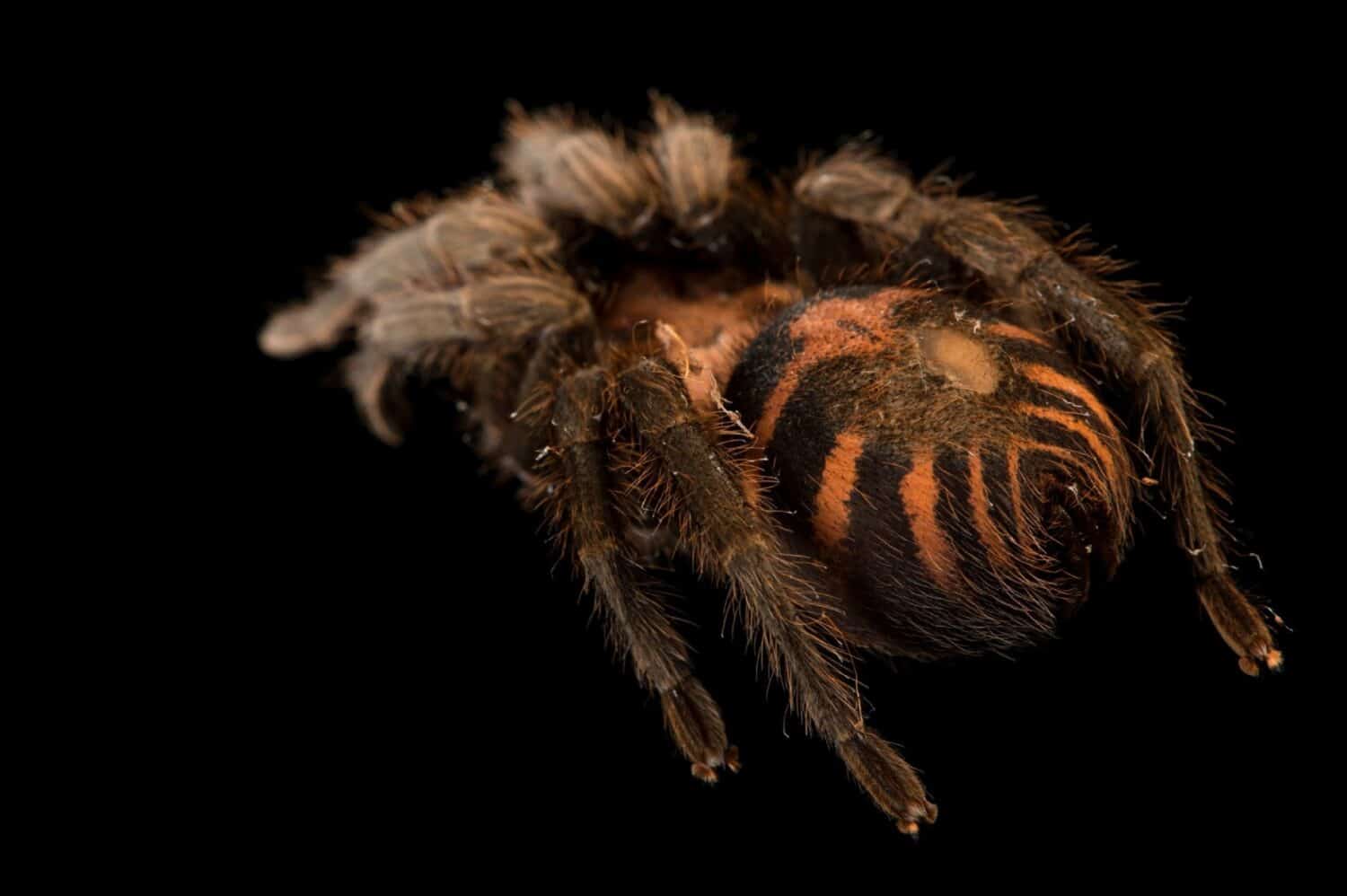
The Suntiger or Tiger Rump Tarantula is as beautiful and exotic as the majestic rainforests it calls home.
©Usha Roy/Shutterstock.com
Tiger Rump Tarantulas, also known as SunTiger Tarantulas, are new world tarantulas found in Central America, including Costa Rica. These pretty spiders are smaller than most tarantulas at four or four and a half inches long. The males only live two or three years, though the females can live 11 years. This tarantula species prefers temperatures that do not go above 82 degrees Fahrenheit. However, they enjoy the typical rainforest humidity level of around 75-85%.
These tarantulas have a dark-colored body with beautiful orange and black or orange and brown striped abdomens. They are challenging to find and are skittish, but they make good pets.
5. Honduran Curly-Haired Tarantula (Tliltocatl albopilosus)

Curly-haired tarantulas are stocky spiders with short legs.
©3,000 × 4,000 pixels, file size: 4.75 MB, MIME type: image/jpeg – Original / License
The Honduran Curly-Haired Tarantula is one of the larger tarantulas you will encounter in Costa Rica. These spiders with a hairdo can be six or seven inches long. Curly-Haired Tarantulas are stocky and stout with dark-colored bodies and short legs. Their pedipalps are almost as long as their legs and might look like ten-legged spiders, not eight-legged. Lighter curly hairs cover their body and make them appear more golden brown.
These oversized arachnids tend to burrow near riverbanks or in the brush. They use the very sensitive hairs on their legs to alert them when an insect is outside their burrow door, then rush out and grab it. These spiders are popular among the pet trade for their mild manners and desire to explore their enclosures instead of hiding away. The females can live for 25 years, while the males only live for five on average.
6. Panama Blonde Tarantula (Psalmopoeus pulcher)

You will most commonly find Panama Blonde Tarantulas high up in the trees.
©Linn Currie/Shutterstock.com
The Panama Blonde Tarantula is a golden-haired beauty that can reach up to six inches. They are much calmer than many tarantulas and tend not to threat pose or kick hairs much. Different tarantulas can have different behavioral traits; some could be more ill-tempered than others. If you do happen to be bitten by one of these spiders, you will want to seek medical attention immediately. Their venom is similar to capsaicin in peppers and will burn where you were bit. In the wild, these spiders don’t dig tunnels like their tarantula cousins; instead, they are arboreal, meaning they like to climb trees and make their homes up there. Unlike Spider-Man, the Blonde Tarantula leaps from branch to branch, looking for prey.
7. Redleg Tarantula (Megaphobema mesomelas)
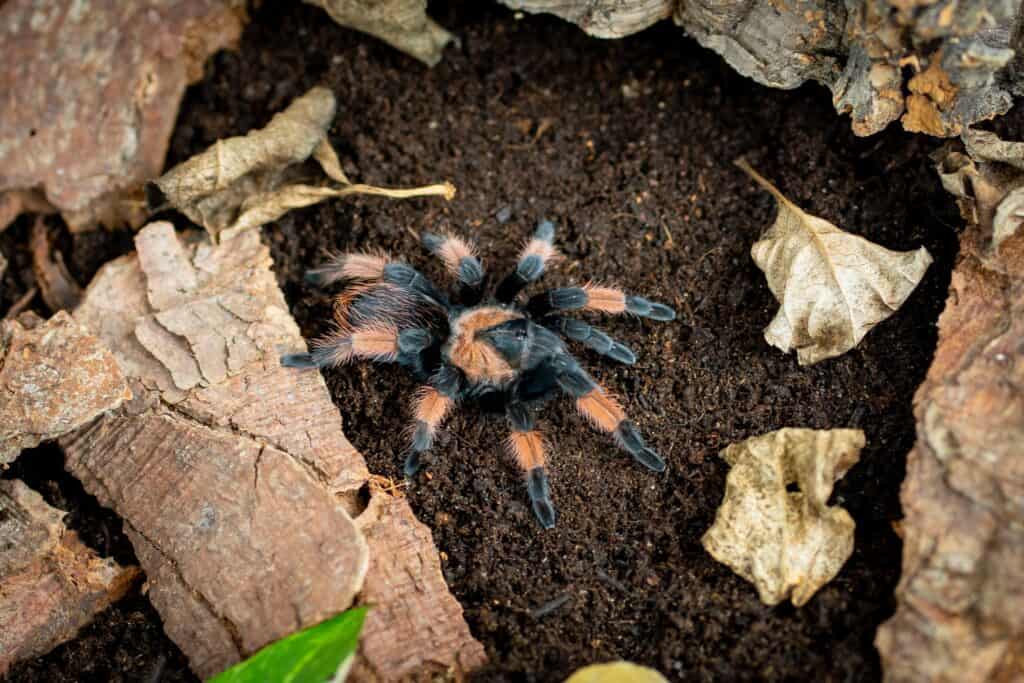
The Costa Rican Redleg Tarantula (
Megaphobema mesomelas) is a cousin of the Mexican Redleg Tarantula (
Brachypelma emilia).
©tempisch/Shutterstock.com
The Costa Rican Redleg Tarantula is a rainforest dweller and lives in the Cloud Forests of Costa Rican. They are very similar in looks and temperament to the Red Knee Tarantula. These spiders, including their cousins, the Mexican Redleg Tarantulas, are popular among the spider hobbyist and make good pets for experienced spider owners. Since they are very skittish and can become stressed quickly, they aren’t for everyone and require a quiet home. Their legs have reddish-orange banding and are otherwise dark brown.
You will not find these giant spiders making webs in the clouds. They instead create almost mammal-looking burrows to live in. The Costa Rican Redleg Tarantula is an opportunistic hunter but prefers to feast on crickets. When threatened, they kick the log hairs off their abdomen at the intruder. The hairs cause severe itching and, if they get in the eyes, can cause blindness. Their bite is not harmful to humans.
8. Brown Widow (Latrodectus geometricus)
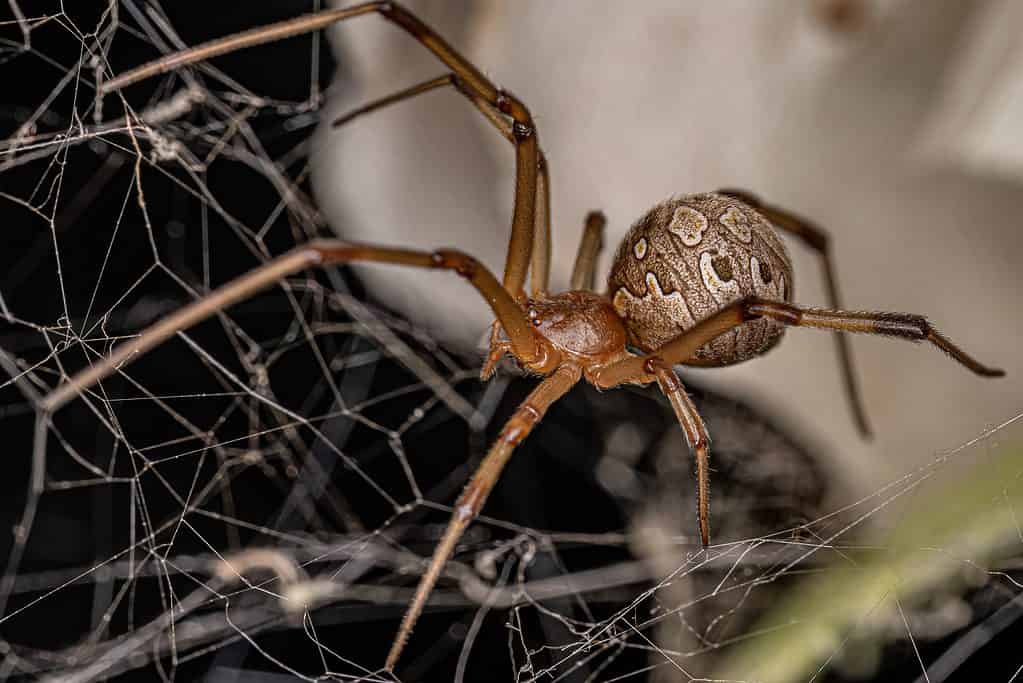
The female adult Brown Widow spider, lays spiky easy-to-recognize egg sacks.
©Vinicius R. Souza/Shutterstock.com
The Brown Widow is similar to its cousin, the Black Widow. The Brown Widow has a pretty brown mottled body and has the trademark hourglass on its underside like the Black Widow, except it’s yellow or orange instead of red. The striped legs are generally brown with yellow bands.
Though the Brown Widow’s venom is less toxic than the Black Widow’s, it can still cause uncomfortable symptoms. Some symptoms are pain, muscle rigidity, vomiting, and sweating. Widows of both colors are prone to making their webs near homes, garages, buckets, sheds, and heavy-branched wooded areas. Since these are tiny spiders, use caution in an area known for Brown Widow nests.
9. Pantropical Huntsman Spider (Heteropoda venatoria)
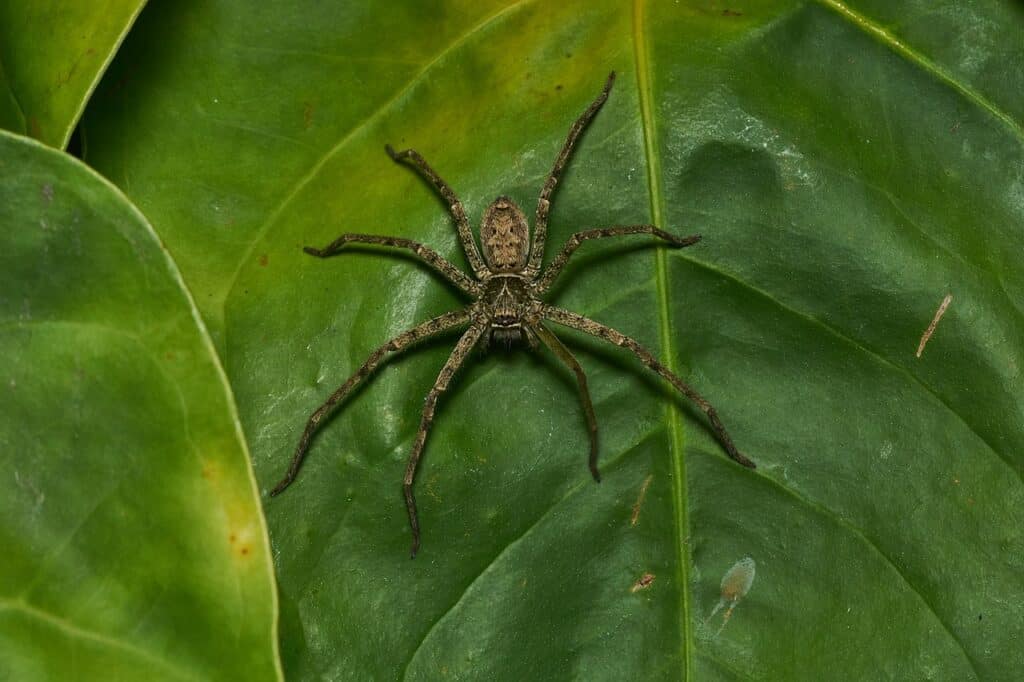
Pantropical huntsman spiders are native to Asia.
©© 2017 Jee & Rani Nature Photography / CC BY-SA 4.0 via Wikimedia Commons – Original / License
The Pantropical Huntsman spider can grow to three up to five inches in size. Their body length is only around an inch big, but they have wide sprawling legs. Like most spiders, the females are larger-bodied. Both sexes are camouflaged to blend in with the Costa Rican jungle and are brown and cream-colored with telltale black spots on their legs.
These spiders are native to Asia but are relatively common worldwide since they are excellent hitchhikers and are another spider sometimes referred to as banana spiders. Pantropical huntsman spiders are heat-seeking beings and like to hide in crevices, barns, and in homes. They are, however, nocturnal, so unless you also are, you might not see them too frequently. They can be a great guest since they tend to hunt cockroaches.
10. Tiger Bromeliad Spider (Cupiennius salei)
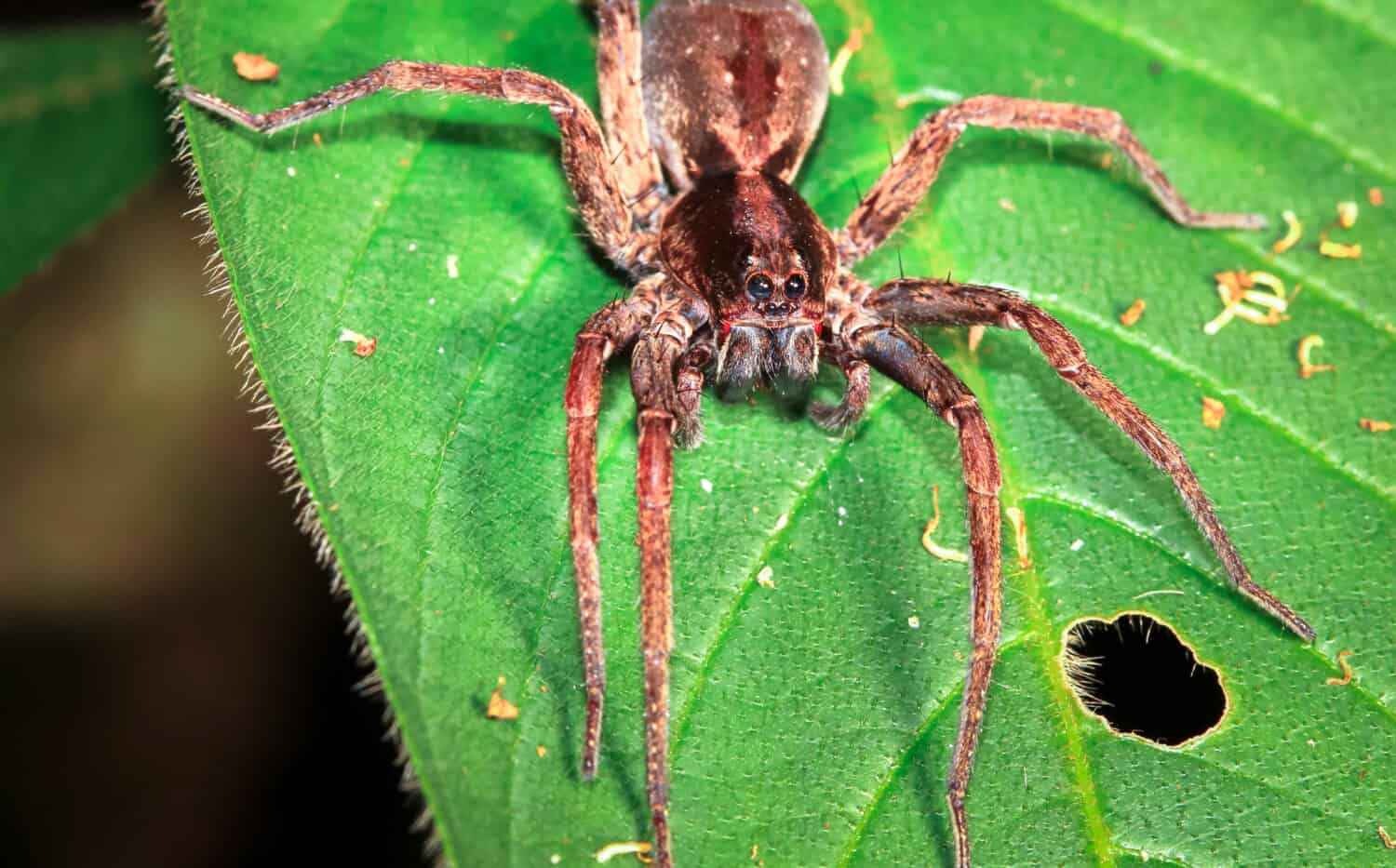
Tiger Bromeliad Spider (
Cupiennius salei)is one of the smaller Wandering Spider species.
©Kevin Wells Photography/Shutterstock.com
The Tiger Bromeliad Spider is also known as the American and Large Wandering Spider. Females can grow to be 1.38 inches, with males growing to be a fraction of that size at .10 inches. These rainforest spiders tend to hide in the leaves of large plants, like Bromeliads, which is how they got their name. They have occasionally hitchhiked in bananas imported into the United States.
In the rainforest, these tiny spiders hide in fallen leaf litter on the forest floor, waiting for beetles or butterflies to enter their vision. They have strong pedipalps (small front-feeding legs) and can hold their prey down after injecting paralyzing venom. They are not harmful to humans, but the medical industry is using the shape of their fangs to create better-quality medical needles.
11. Spotted-Leg Bromeliad Spider (Cupiennius salei)
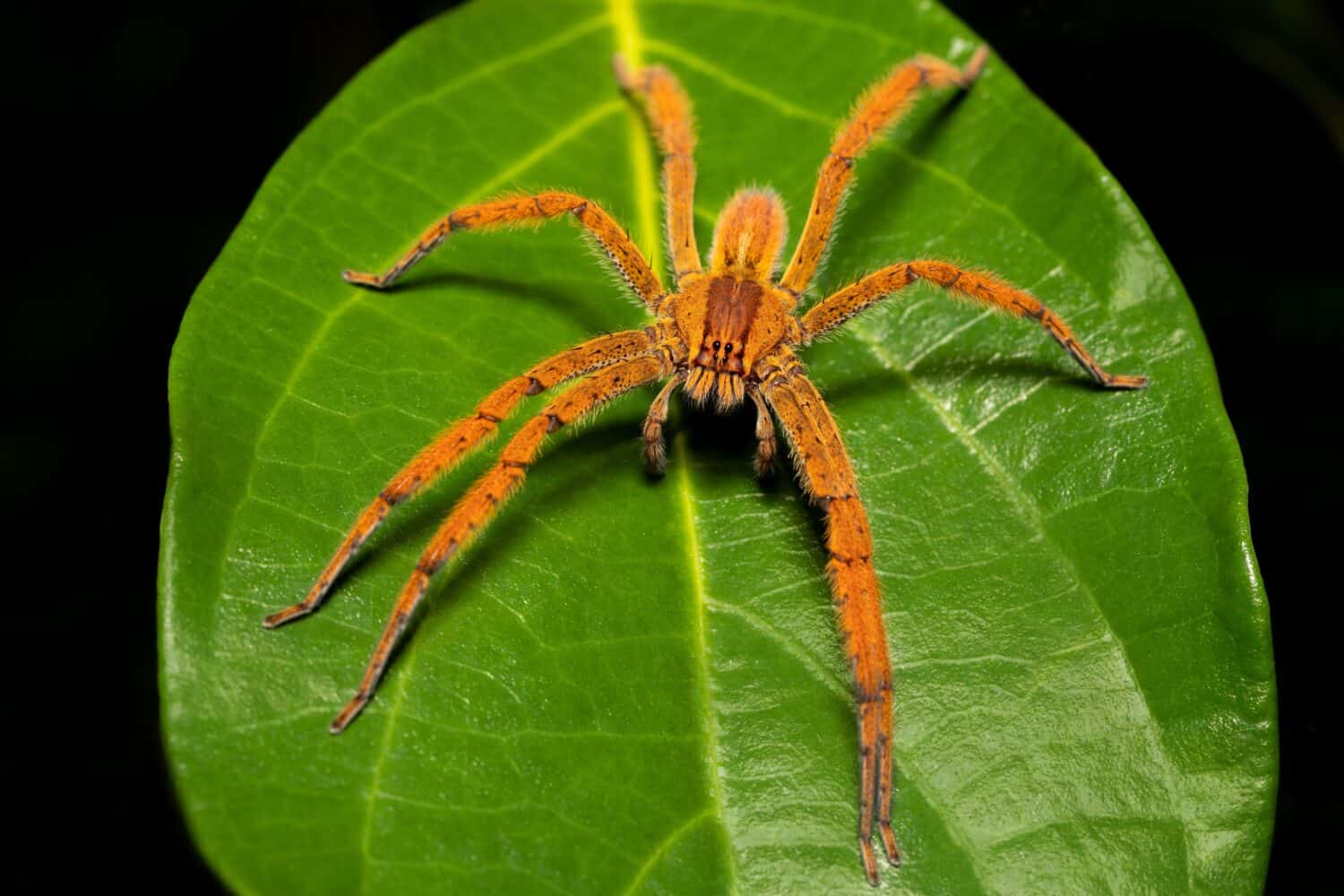
The bright orange Spotted-Leg Bromeliad Spider is rarely seen or photographed.
©Artush/Shutterstock.com
The Spotted-Leg Bromeliad spider is also known as the Wandering and Banana Spider. They hide in large plant leaves, like the banana tree. These spiders are known to hitchhike to the United States along with plant and banana imports. They tend to make tunnel nests in the long leaves of the banana tree by rolling them together with the silk they produce. The inside of the lair helps the spiders retain humidity so they do not dry out when the temperatures soar in the jungle.
The males and females both get to be five inches. The Banana Spider is generally rust-brown, but some specimens seen are bright orange. The underside of their legs is black spotted, giving them their name. Though called a Wandering Spider, these spiders are not anywhere near as dangerous as their relatives, the Brazillian Wandering Spider. If bitten by the Costa Rican variety, you might notice a slight itch for an hour and nothing more.
12. Golden Silk Orb Weaver (Trichonephila clavipes)
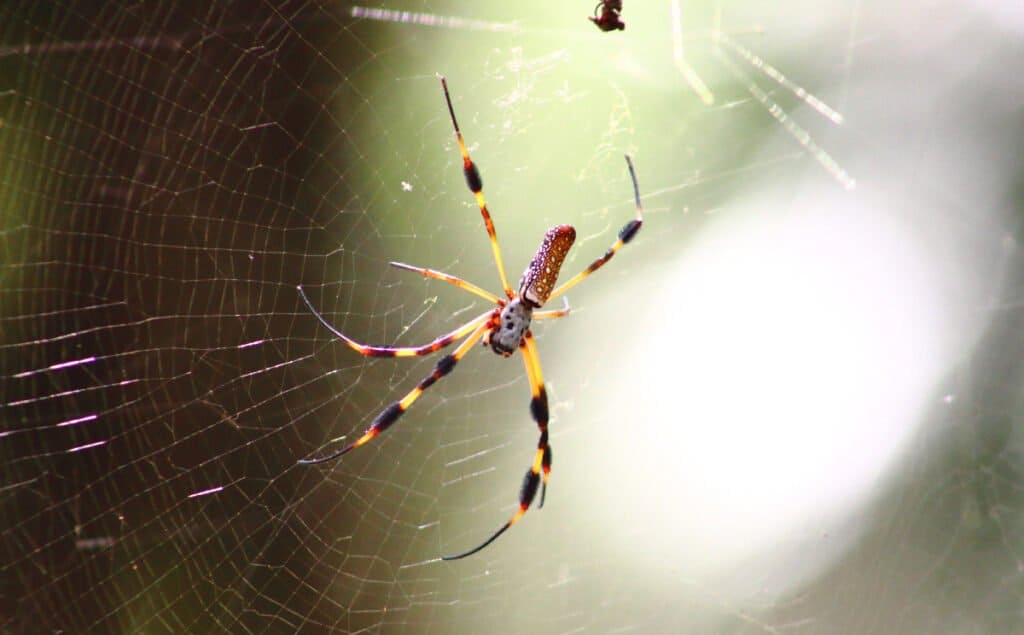
The golden silk orb weaver builds a web that measures nearly 5 feet in diameter.
©Max Rossa/Shutterstock.com
The Golden Silk Orb Weaver is a breathtakingly beautiful spider that could pass for an alien in the right circles. These amazing spiders are harmless and will do anything to avoid human contact. They make massive webs and do an excellent job of helping keep nuisance insect populations in check. Many people refer to the orb weavers as Writing Spiders because it often looks like they are trying to spell something out in their intricate webs. These brightly colored spiders are two or three inches long and make their webs between trees.
Thank you for reading! Have some feedback for us? Contact the AZ Animals editorial team.






